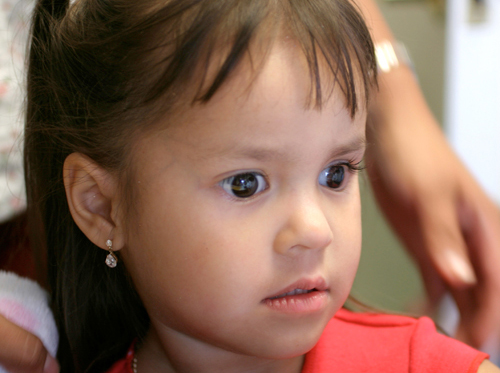Children who have been born with congenital eye diseases or have eye injuries might need to have prosthetic eyes (artificial eyes). Caring for a child is a big responsibility and having a son or daughter with an eye condition or disability can be more challenging. However, with the help of medical science and the skills of an ocularist, a child can easily adapt to wearing a prosthetic eye and live a normal live.
Two classical congenital eye disorders that can be helped by scleral shell prosthetics for children are congenital anophthalmia and congenital micropthalmia. The former is a condition in which a child is born without an eye or both eyes. A result of genetic abnormalities, this disease is considered rare. Conversely, the latter is a condition in which the eye or both eyes are underdeveloped and small. Also a result of a chromosomal defect that occurs during the development of the fetus, congenital microphthalmia is a condition that can occur in 1 out of 10,000 live births. Although there are also cases in which scleral shell prosthetics and prosthetic eyes are recommended for pediatric patients who have eye tumors and those who have damaged eyes as a result of injury or infection.
Artificial Eyes for Children
For children who are born with anophthalmia or those who have undergone enucleation, prosthetic eyes can be fitted. For a child with the inborn eye condition, lid and socket therapy are done before the placement of the artificial eye as early as in infancy. This is important for the soft tissues to be defined and the growth of the bony orbital will be stimulated. With the use of digital prosthetic eye enhancement technology, the color of the iris and veins of the other eye are applied to the artificial eye for a more natural appearance. It is also important to seek the help of a board certified ocularist to ensure treatment is started early and that proper adjustments to the artificial eye are made. This is crucial in ensuring that the size of the artificial eye will go well with the physical development of the child.
Meanwhile, for a child who was born with microphthalmia, a sclera shell prosthesis can address the problem. A molded cover shell prosthesis can be made for the patient regardless of the severity of the problem. Before a prosthesis can be created, there might be a number of clear acrylic trial shells to be used for the gradual enlargement of the margins of the eyelids. These will also increase the size of the eye socket so both eyes will look symmetrical as time passes by.
For children who are born without eyes, artificial eyes can be fitted between three months and three years. As for cases where the eye was lost from an injury or disease, fitting of the ocular prosthetics can be done four to six weeks after the surgery. Seeing your child with an eye condition and in need of a prosthetic eye can be heartbreaking. But with giving him or her an artificial eye, your child can live a normal life.






